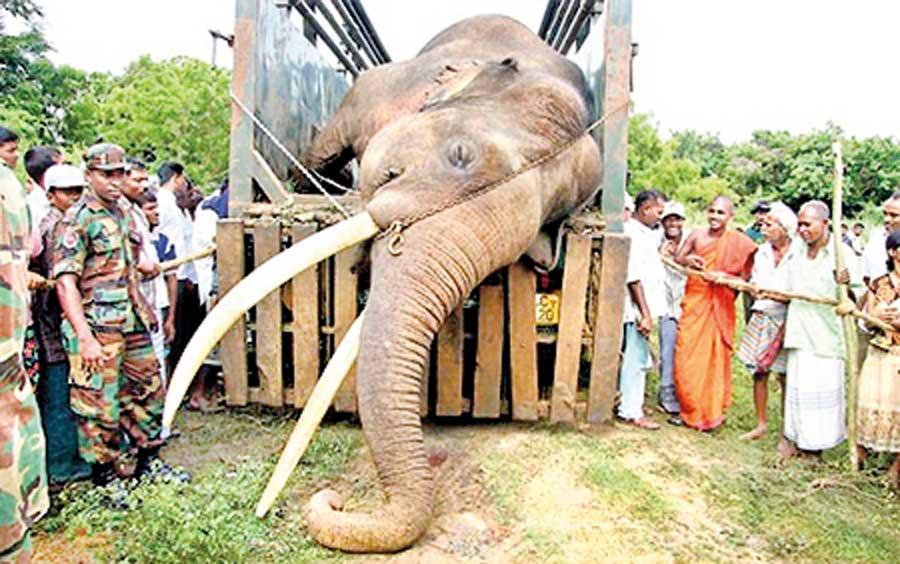28 Jun 2023 - {{hitsCtrl.values.hits}}

The recent news about Muthu Raja, a captive elephant in Sri Lanka, and his potential return to Thailand has sparked discussions regarding the well-being of this majestic animal.
sparked discussions regarding the well-being of this majestic animal.
Originally gifted to former President Mrs Chandrika Kumaratunga in 2001, Muthu Raja was intended to be trained for a ceremonial role in the Kandy Perahera, carrying the sacred casket of Relics.
However, it was later revealed that the elephant suffered from severe distress due to mistreatment by his mahout.
In response to pressure from animal rights groups and NGOs, the Thai Government became involved, and after careful deliberation, it was decided that Muthu Raja should be airlifted back to Thailand for proper care.
Transporting a four-ton elephant is no easy task, as it entails significant stress even when using specially designed trucks for road transport. Airlifting the elephant presents its own set of challenges and risks.
During the transportation process, the elephant will undergo significant trauma, especially considering his size, existing wounds, and ailments. While there are social media posts showcasing the training of the tusker to fit into the transport enclosure, it is important to question whether this relocation is the best course of action.
"Muthu Raja was meant to play a ceremonial role instead, he endured severe mistreatment. The decision to airlift him back to Thailand also raises concerns about the traumatic journey"
Animal rights activists who support the project may have good intentions, but it is crucial to acknowledge the potential dangers and distress the elephant will experience during this journey, which could even be fatal.
In the case of relocating wild elephants, sedation is necessary during road transportation, but this method is perilous, as tragically demonstrated by the ill-fated translocation of Galigamuwe Raja, one of our majestic tuskers, who lost his life in the process.
Instead of investing in an extravagant and risky endeavour, it would be more prudent to allocate resources towards setting up a well-equipped facility in Sri Lanka itself. Such a facility would provide Muthu Raja with proper care, a peaceful environment, and the opportunity to spend the rest of his life in tranquillity.
Funds currently being expended on the high-profile relocation could be utilized to construct a suitable elephant paddock, where Muthu Raja could roam freely under the constant supervision of trained mahouts and veterinary professionals.
Considering the potential trauma and risks associated with Muthu Raja’s relocation, it is worth exploring the establishment of a local sanctuary that would ensure his well-being and provide him with a peaceful retirement.
Redirecting the financial resources and efforts towards creating a nurturing environment for the elephant in Sri Lanka would be a more compassionate and sustainable approach.
10 Jan 2025 26 minute ago
10 Jan 2025 31 minute ago
10 Jan 2025 2 hours ago
10 Jan 2025 2 hours ago
10 Jan 2025 2 hours ago